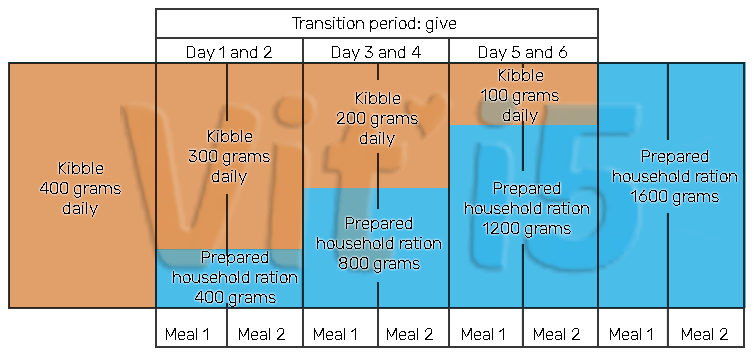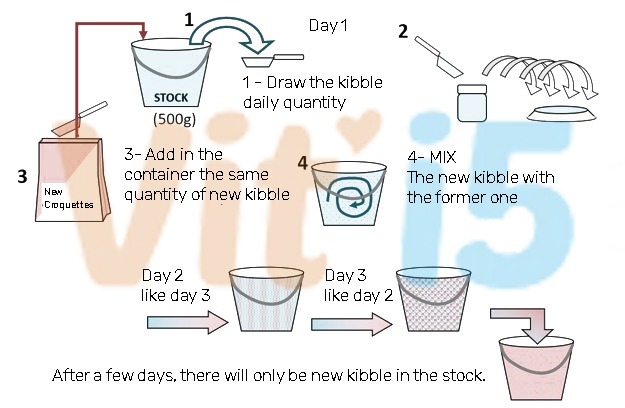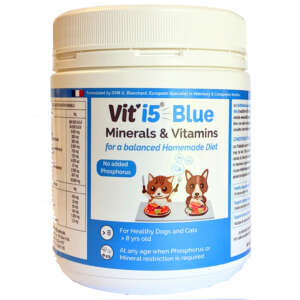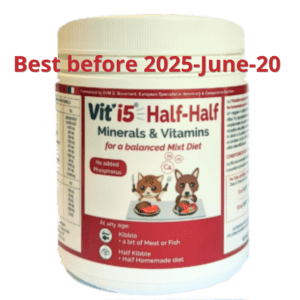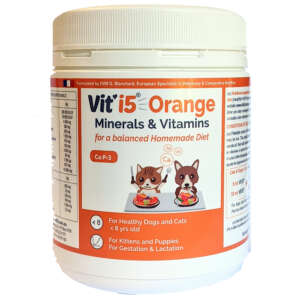News

Food transition in dogs
Above all, any change in the type of food, ingredient, or food (even within the same brand!) requires a food transition.
Find out how to smoothly operate food transition in dogs.
What are the benefits of a food transition?
When it comes to food transition in dogs, it is above all a matter of allowing the intestinal flora to adapt gradually and to limit digestive disorders (gas, even diarrhea). Those can come along a too sudden change, because your dog’s digestive tract is used to the composition of its daily diet.
Most dogs welcome a 4 das change in diet, but for some pickier ones, a food transition requires time for them to accept a new ingredient or food.
Food transition in dogs: be progressive
First, offer a small amount of the new food once a day, and continue until it is accepted two days in a row. Then, double the suggested quantity, and decrease the quantity of the usual food … until completely replaced.

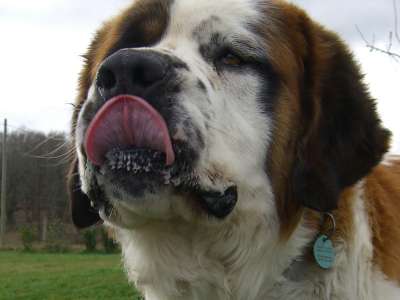
In practise, how to do food transition in dogs?
It is usually sufficient to mix half the amount of usual ration given in one day with half of the amount of new recipe for a day, to distribute a mixture at each meal, for 4 to 7 days.
It is better to give the mixture in 2 or 3 meals rather than half in the morning and half in the evening.
Food transition in dogs: the basic principle
Mix a portion of the usual food with a portion of the new one, and split this mix in two meals.
On a daily basis, increase the portion of new food while reducing the portion of the previous one.
Example of food transition in dog
Your dog goes from a kibble ration of 400gr a day to a household ration weighing 1600gr in total (mix of meat, Vit’i5, oil, vegetables and cooked rice).
Adaptative Process
For 2 days, give daily
1/4 of the final houselhold ration (1600gr/4 = 400gr) and 3/4 of the regular kibble amount (400gr/4*3 = 300gr).
SPLIT this first mix, combining 1/4 of household ration and 3/4 of kibbles in 2 MEALS.
Note: if there’s any leftover of the freshly prepared household ration, it can be kept in the fridge
The 2 following days, give daily
1/2 of the final houselhold ration (1600gr/2 = 800gr) and 1/2 of the regular kibble amount (400gr/2 = 200gr).
SPLIT this second mix, combining 1/2 of household ration and 1/2 of kibble in 2 MEALS.
The next 2 days, give daily
3/4 of the final houselhold ration (1600gr/4*3 = 1200gr) and 1/4 of the regular amount of kibble (400gr/4 = 100gr).
SPLIT this third mix, combining 3/4 of household ration and 1/4 of kibble in 2 MEALS.
By the seventh day, you can give your dog solely the household ration: 1600gr for the day, split in two 800gr meals.
Frequently Asked Questions about food transition in dogs
Should we always give a mixture when giving 2 different types of food?
If your dog eats a mixed ration, half kibble and / or cans, and half household ration, must it necessarily be given all mixed?
Or can we give, for example, kibble in the morning, a mixed ration in the evening?
> If your dog is used to this, yes, no problem.
> If your dog has been used to a household ration for a long time, it is better to make a half-and-half transition, mixing at each meal, for a week, then, to try to give half the kibble in the morning, taking care to wet the kibble well, and the household half in the evening. Whenever your dog tolerates it digestively (no gas, bloating or diarrhea), you can continue.
> If your dog has been used for a long time to a ration only consisting of kibble, it is better to make a half-and-half transition, mixing at each meal, for a week, then, to try to give half the kibble in the morning, taking care to wet the kibble well, and the household half in the evening. Whenever your dog tolerates it digestively (no gas, bloating or diarrhea), you can continue.
> If your dog eats a household ration, and you want to vary the meat and fish, no need to change from one day to another, the changes of ingredients of a household ration (meat, fish, vegetables, starch) can be done without transition, as long as you give well with rapeseed oil and Vit’i5, that the oil is not heated or oxidized, that the starch is not frozen / thawed … everything will be fine. well.
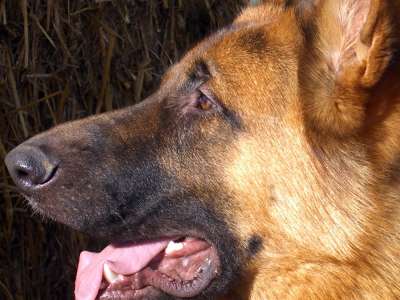
If your dog is sensitive
Some dogs are more sensitive than others, and in order to change kibble, the following method may work better:
Food transition in dogs : changing the kibble
>First, take a small stock of regular kibble (for example 500 grams) and draw from this stock the quantity needed for the day, which will be distributed in several small meals
> After that, add the same quantity of the new kibbles to this small stock, and mix well
> The next day, take the quantity for the day in this stock mixed with a very small quantity of new kibble,
> Add the same amount of new kibble to the remaining stock, and mix well
After a few weeks, the transition will have taken place, smoothly
Tips and tricks for food transition in dogs
Depending on the situation, it may be more or less difficult to change your dog’s diet. Shall it be picky or reluctant, you can try several tricks :
– Add an ingredient (meat juice or fish stock) that your dog likes
– Add a little warm or cold water to the meal depending on the season
– Split the ration into several meals (if the daily amount is prepared at once, give one meal and keep the rest in the refrigerator for subsequent meals)
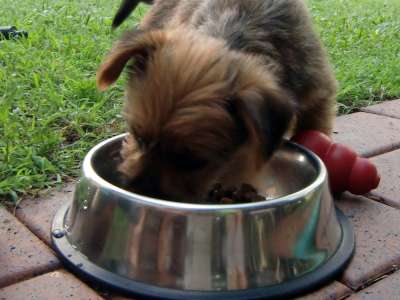

And how do I know my dog is well fed ?
Read our whole article on hints to figure out if your cat is in perfect health.

